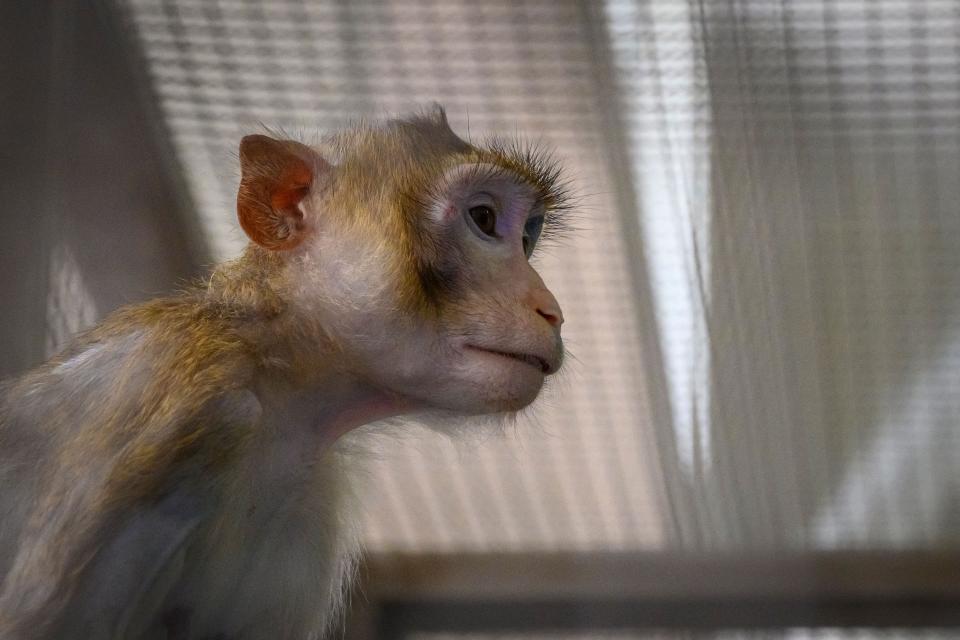A monkey, a mussel and a crayfish: No joke, but likely the next Florida invasive species
Florida has at least 40 more invasive species to worry about, according to a recent study published in Ecosphere.
The state is already known for an infestation of Burmese pythons along with many other interlopers such as spectacled caimans, monk parakeets and the occasional anaconda.
Now, the study says, Florida has to be vigilant about these likely invaders: the alewife, zebra mussel, crab-eating macaque and red swamp crayfish. An alewife is a sleek, silvery species of herring that grows to about 15 inches.
A team of experts, led by University of Florida scientists, evaluated species with features that make them adept at invasion. The team members gave each of 460 species a score based on their likelihood of arriving and becoming established and their potential impacts on the ecology, the economy and human health. Forty were deemed the biggest threats to Florida.

“Invasive species management tends to be reactive, instead of preventative,” said Deah Lieurance, who led the project as the then-coordinator of the UF/IFAS Assessment of Non-Native Plants, in a UF blog post. Lieurance is now an assistant professor of invasive species biology and management at Penn State University. “This was the reason behind this project: to protect Florida’s natural areas, while also saving the money and effort that would go into management strategies.”
Burmese pythons have had a devastating effect on south Florida wildlife, preying on at least 24 different species of mammals including deer and raccoons. Many believe the reptiles were established in Florida because some escaped or were released by owners.
So how will these future invaders get here? Some common ways are through hitchhiking on boats, being released in ballast water and more escapes from the pet or horticultural trades.
Zebra mussels, established in the Great Lakes, arrived in ballast water released by boats, scientists believe. The mussels are an expensive nuisance and hurt the environment. The US Geological Survey notes: "They filter out algae that native species need for food and they attach to – and incapacitate – native mussels. Power plants must also spend millions of dollars removing zebra mussels from clogged water intakes."
More: Python Week: Could these 7 deadly exotic species get a foothold in Florida?
Indeed, dealing with exotic intruders isn't cheap. The annual cost for invasive species management globally in 2019 was $423 billion, and that cost will likely quadruple every 10 years, according to the Intergovernmental Science-Policy Platform on Biodiversity and Ecosystem Services.
Florida is “ground zero” for invasions in the United States, says Matthew Thomas in the blog post. He's the director of the UF/IFAS Invasion Science Research Initiative, which was created in 2022 to address the state’s unique challenges.
A small population of red swamp crayfish was detected and eradicated in Clay County in 2022, Lieurance said.
“The one that wasn’t even on my radar was the macaque,” Lieurance said in the blog post. “But they’re already in the state in captivity, and as their name says, they’re good at eating crabs. This means they would have an impact on our native biodiversity. Plus, their relative, the rhesus macaque, is already established in the state, and these crab-eating macaques also are likely to host the same [herpes B] virus found in the Silver Springs State Park populations.”
And more species could be coming.
“Something that came up in the time since we convened this group was the yellow-legged hornet, a species that wasn’t evaluated in this study,” Lieurance said. The predatory species was found just across the border, in Savannah, Georgia, this past August, the blog said. “It’s likely that’s one species that would appear as high risk for invasion to Florida, if the horizon scan was done today.” Horizon scan refers to a detailed examination of information to identify emerging threats.
Lieurance recommends scientists do a similar horizon scan every five years or so.
“Now that we have a list, the process next time would involve reviewing what’s there and seeing what new things are coming in, or have the potential to appear,” she said.
“As the saying goes, an ounce of prevention is worth a pound of cure,” Lieurance said. “The majority of prevention efforts are initiated when the species has already been detected and often when it’s too late. This project strives to keep concerning species out and truly protect Florida’s biodiversity, unique ecosystems, socioeconomic infrastructure, and human well-being.”
The study is available here: doi.org/10.1002/ecs2.4711.
This article originally appeared on Fort Myers News-Press: 40 more invasive species could be heading to Florida, study warns

